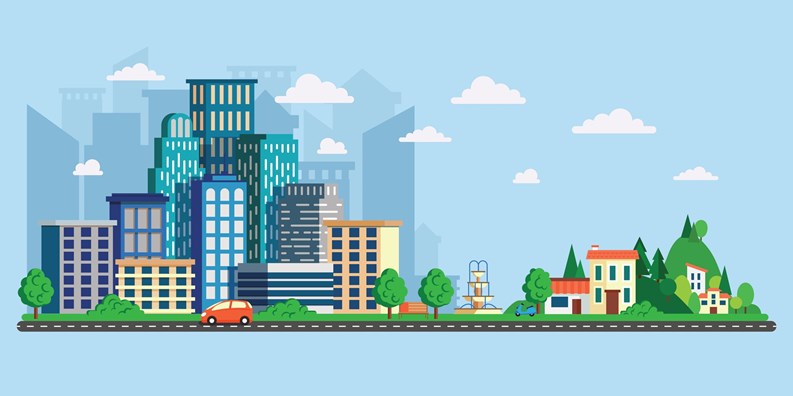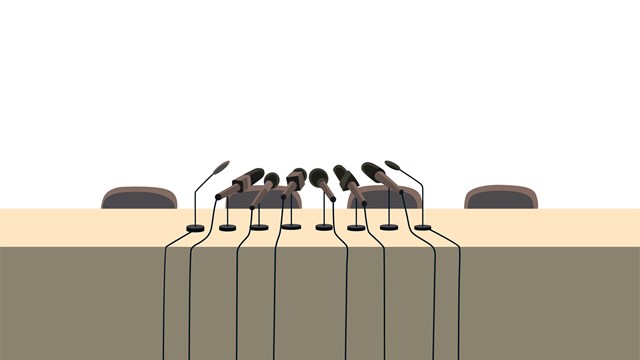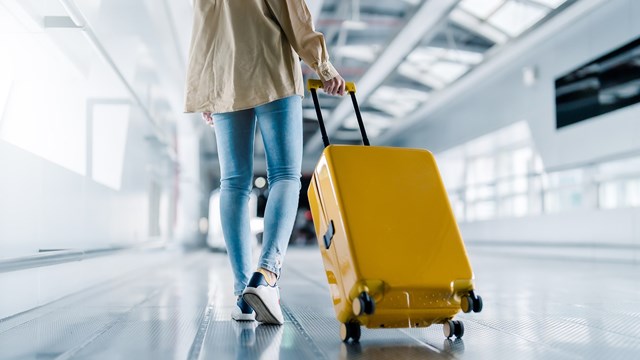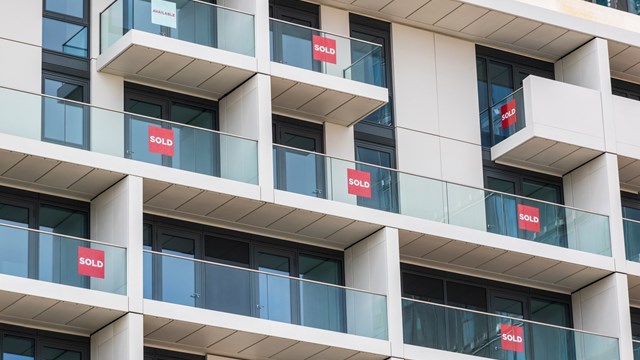One of the noted changes wrought by the COVID-19 pandemic in the New York metropolitan area is the accelerated movement of city dwellers to less crowded suburban - and sometimes even rural - areas to escape the elevated risk of infection in dense urban environments. Many of these ‘refugees’ are temporarily cocooning in second homes along the shores and in the mountains, with every intention of returning to the city when the virus is better controlled, or even eliminated. However, those without the luxury of multiple homes are making the move from New York City permanently - which raises the question of how the exodus is affecting the real estate market in nearby markets - like New Jersey, for example.
Temporary or Permanent?
One question is whether these nomads are seeking a permanent move, or just a temporary one with the intent to return to New York City when the pandemic ends. One easy gauge of the impermanence or permanence of the phenomena is whether newcomers to New Jersey are renting apartments or buying homes. Obviously, a purchase indicates a long-term commitment, while a rental may indicate that the mover may up stakes and move again in the not-too-distant future.
Eugene Cordano, realtor and president of Brown Harris Stevens New Jersey, has a front row seat to the real estate aspect of this unprecedented event. “For exiting New York apartment dwellers, demand is still primarily for single-family homes,” he says. “I would estimate perhaps one in every 20 buyers we see - about five percent - is seeking an apartment rather than a house. They’re not yet ready to give up the conveniences of apartment life. An interesting aspect of this market though, is that since the first of this year, we have more New Yorkers looking at apartment buildings in more suburban locations than before. The focus is no longer only on the Gold Coast, directly opposite Manhattan along the Hudson, which affords a five-minute PATH ride back to the city.”
What’s Driving the ‘Exodus’?
Beyond simply escaping the density of the city proper while maintaining accessibility to the urban lifestyle that made it so desirable in the past (if somewhat less so these days) what do those crossing the river to New Jersey seek in a new abode? Often, the answer is that most coveted of New York amenities: outdoor space. While New York living has always provided residents with ample access to parks and public spaces, even these outdoor haunts now strike some as suspect. While the main risk for COVID-19 is spending extended time indoors in poorly-ventilated rooms, fear runs high - and over the last year, otherwise intrepid New Yorkers have become distinctly leery of public spaces. Add the winter’s cold to that, and you have a powerful impetus to look elsewhere.
After private outdoor space, Cordano lists the following amenities as the most sought-after by New Yorkers coming to New Jersey: “Private entrances, which are available in townhouse-type communities throughout the suburbs and the Gold Coast are also in demand. And of course, they are seeking parking and ample storage as well”
How Permanent is the Change?
The permanence of many of these moves outward may hinge on a number of factors, not the least of which is how effectively the pandemic is brought under control, and when. The dividing line between a permanent move and a temporary one goes back to whether one is renting or has bought a new home. “I do think those who have purchased homes,” says Cordano, “are here to stay. They’ve put down roots, as the expression goes. Renters though, are definitely waiting this out. Many have come back to New Jersey to be near family and friends, but have either not sold their homes in the city or were renters there as well, so they’re keeping their options open.”
Permanent lifestyle changes likely depend on both macro factors - like the ability or necessity to return to the city or not, especially since the dates to return to offices in the city for most employees is uncertain at best - and micro factors, like whether family breadwinners can continue to work remote, and how well that works for them and their family or household. For many, this is still to be determined. For those who have purchased homes, Cordano believes the majority have made permanent lifestyles changes and are enjoying their new suburban lifestyle.
The View from the Other Side
Joanna Mayfield Marks, a broker associated with Brown Harris Stevens in Brooklyn, sees things a little differently. “Last year,” she says, “the percentage of sellers entering the market and planning on leaving New York was really big, maybe 50-70%. Now, with changes in the market, a lot of sellers are moving to upgrade or downsize. The ones who wanted to flee may have rented, or already sold. I think the common sentiment now is that we're at the tail end of this with the vaccination being administered. I anticipate we'll see people coming back. I already have some buyers from last year's spring market who’ve returned.”
The long-term effects of COVID-19 on real estate markets nationwide have varied, and will undoubtedly continue to change as the pandemic does. At this point, the future is anyone’s guess. Perhaps with prices dropping in New York, and rising in New Jersey, we will see some equalization on both sides of the Hudson - which could be healthy for both markets. Time will tell.







Leave a Comment